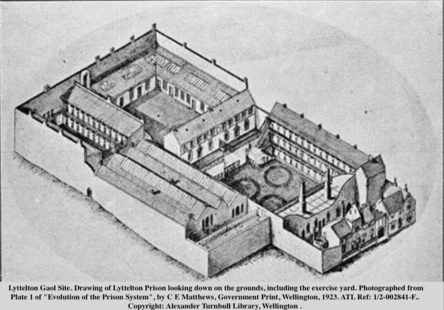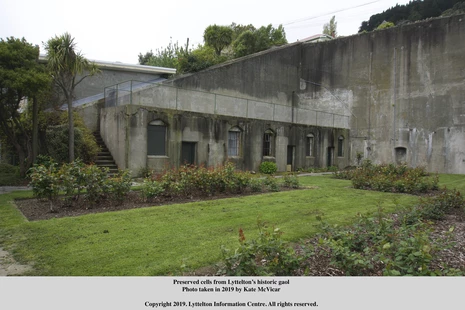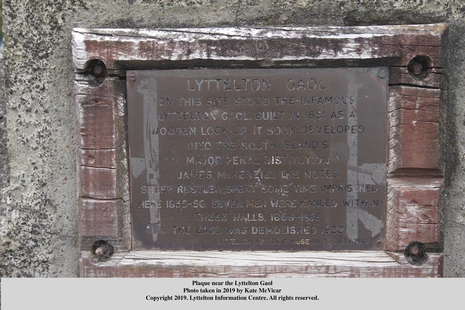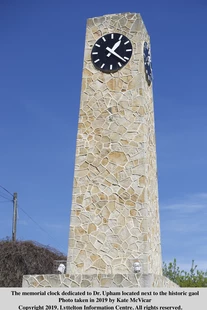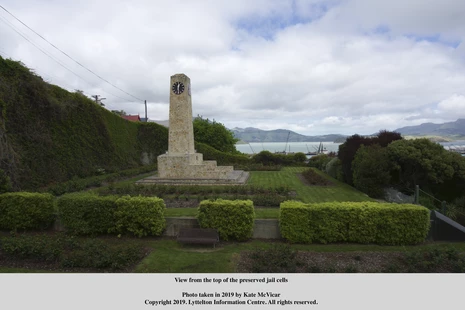E) Historic Lyttelton gaol (jail)
To find the preserved remains of the cells from Lyttelton Gaol, continue up Oxford Street. As you walk past the wall of the school grounds, reflect that this was once the boundary of the gaol built with the red volcanic brick of Lyttelton. Just in front of the swimming pool, you turn right up the path, then right again towards the rose garden and you will see the cells on the left.
Opened in 1852, the Lyttelton prison held up to 300 of the worst criminals from around the South Island and included 29 cells for female prisoners.
The prison was built by the prisoners them-selves, and the hard- labour gang built many of the roads and stone walls around the town. They were also responsible for building the quarantine station found on Quail Island.
Between 1868 and 1918 seven men were hanged inside the prison.
It was closed and demolished in the early 1920s when another prison was opened in Christchurch.
You can find more information on the women of the Lyttelton Gaol here
Go to the next building 3 Winchester Street

